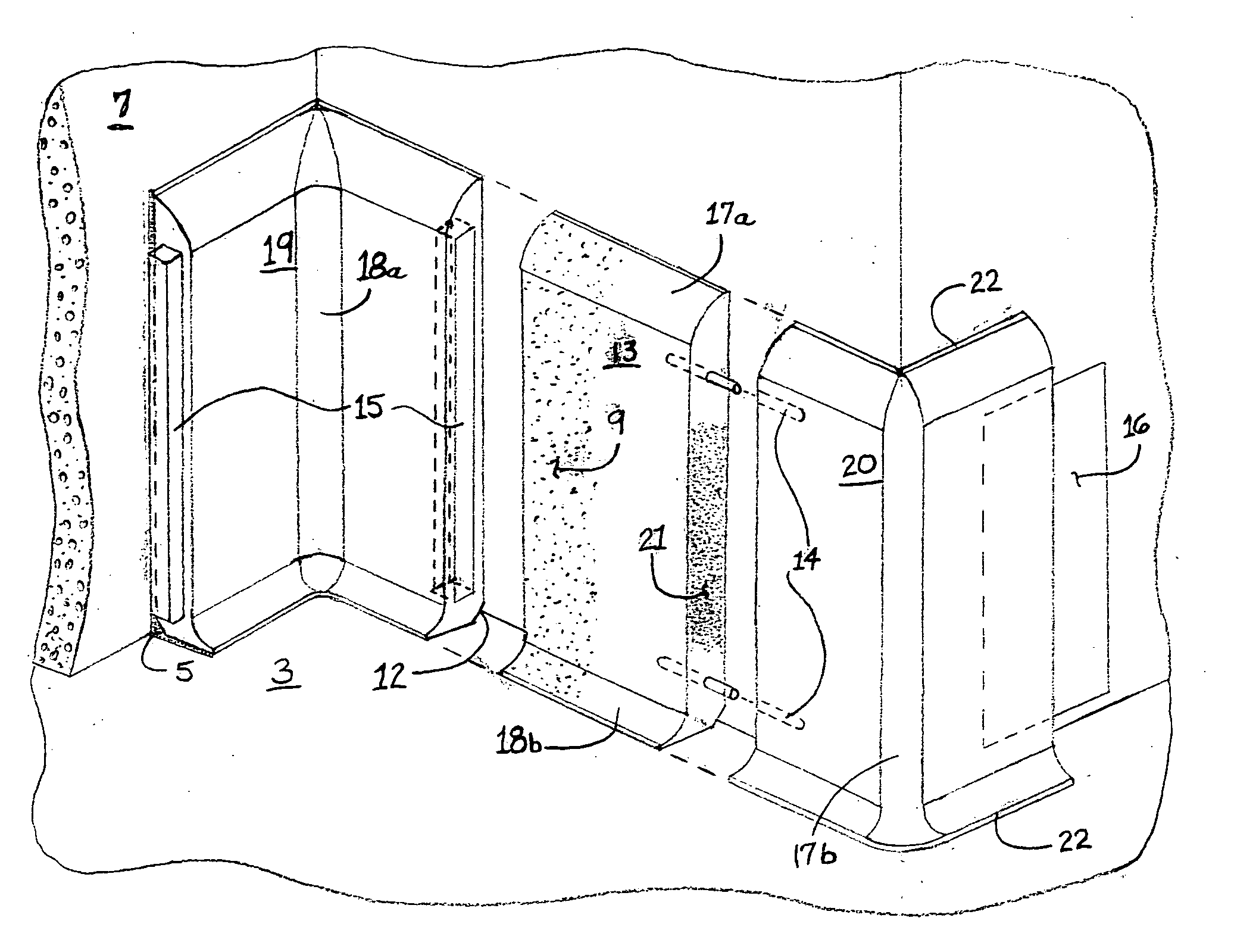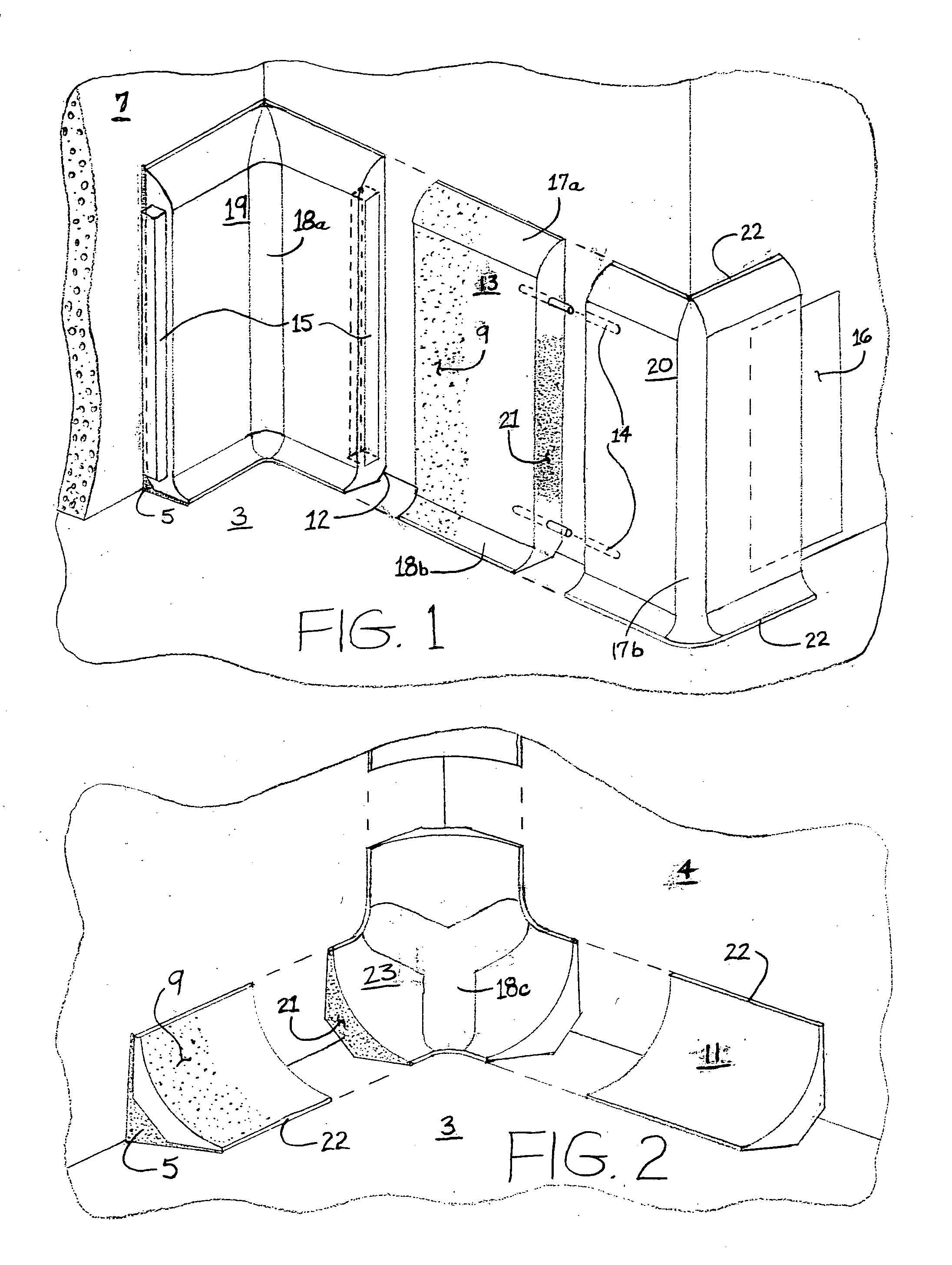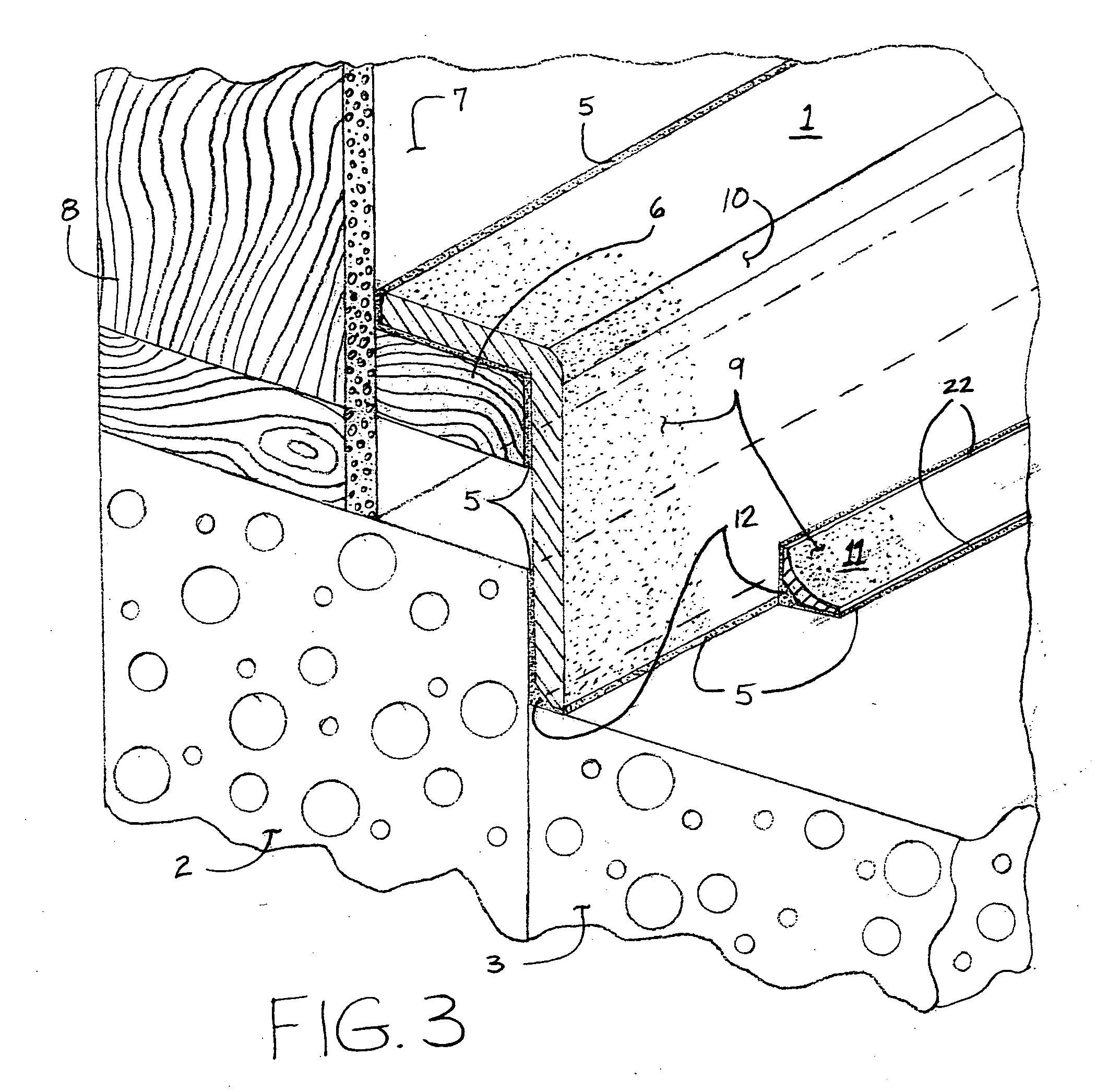Cove elements and floor coatings and methods for installing
a technology applied in the field of cove elements and floor coatings and methods for installing, can solve the problems of laborious and time-consuming, difficult to keep corners clean and the area where walls meet flooring clean, etc., and achieve the effect of less expensive installation
- Summary
- Abstract
- Description
- Claims
- Application Information
AI Technical Summary
Benefits of technology
Problems solved by technology
Method used
Image
Examples
Embodiment Construction
[0062] Definition of Terms
[0063] The term monolithic flooring system used herein refers to a flooring system that includes an under-layment or substrate of material that is rigid and generally uniform, such as cement, concrete or other cementitious or cement-like material (but is not limited to such materials), where the under-layment or substrate is coated with a resinous floor coating. Monolithic flooring systems may include manually formed floor-to-cove transitions along a wall at the floor, or may include the coving members of the present invention installed at the floor and wall junction, attached to either the floor or the walls, with the floor-to-cove transitions or coving members of the present invention are also coated along with the under-layment with the resinous floor coating.
[0064] The term resinous floor coating or coatings refers to any of a variety of materials for coating floors, and in particular, cementitious floors. Resinous floor coatings include epoxies, poly...
PUM
| Property | Measurement | Unit |
|---|---|---|
| Angle | aaaaa | aaaaa |
| Radius | aaaaa | aaaaa |
| Radius | aaaaa | aaaaa |
Abstract
Description
Claims
Application Information
 Login to View More
Login to View More - R&D
- Intellectual Property
- Life Sciences
- Materials
- Tech Scout
- Unparalleled Data Quality
- Higher Quality Content
- 60% Fewer Hallucinations
Browse by: Latest US Patents, China's latest patents, Technical Efficacy Thesaurus, Application Domain, Technology Topic, Popular Technical Reports.
© 2025 PatSnap. All rights reserved.Legal|Privacy policy|Modern Slavery Act Transparency Statement|Sitemap|About US| Contact US: help@patsnap.com



